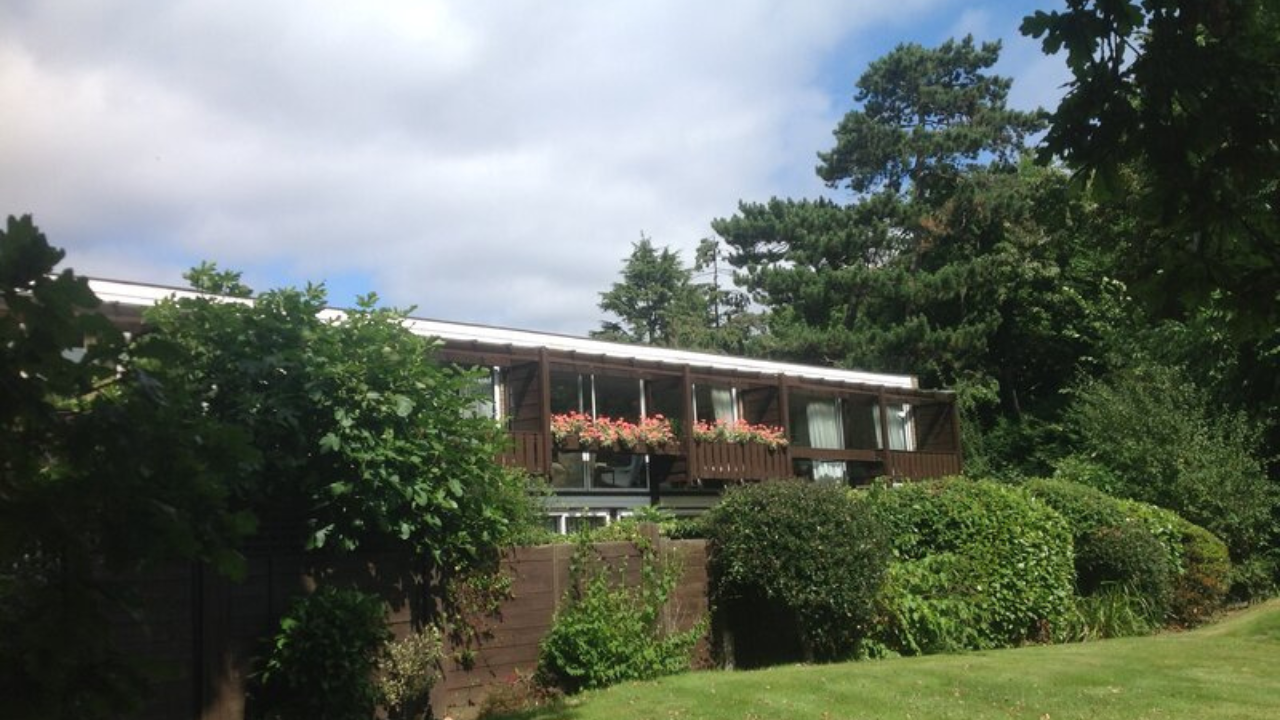
Part of Open House Festival 2023
This Event is now SOLD OUT
How to book
Create your free visitor account at www.openhouse.org.uk to book your free tickets. Guided tour of 3 St Bernard’s Houses every 30mins from 2pm until 4.30pm
ABOUT
Overview
St Bernard’s is a group of 21 houses set on three hillside terraces. The development was built by Wates in 1969-70 to a design by the Swiss architects Atelier 5 (partner-in-charge Anatole du Fresne) – their only project in this country.
Two types of house were built – fifteen with four bedrooms and six with three bedrooms. However, over the years, owners have altered the layout of the houses to suit their needs and in particular have reduced the number of bedrooms to increase living space.
The Design
The design – which combines high density with a high degree of privacy – was inspired by a project – Siedlung Halen – built by Atelier 5 in Berne, Switzerland in 1959-61. This was itself derived from Le Corbusier’s ‘Roq et Rob’ project of 1949. Wates’s Directors visited the Berne project at a time when they were re-developing the Park Hill area of Croydon in a range of styles and types of dwelling. Originally 169 houses were to be built to this design but financial restraints curtailed the project.
The Architect’s Journal of 17 June 1970 thought St Bernard’s “a happy marriage of rational planning and natural materials”. In ‘Buildings of England: London 2 (South)’ (Penguin Books 1983), Cherry and Pevsner described it as “a group with few equals in Britain”.
Each house at St Bernard’s is entered through a small enclosed garden with a pergola. There is an inner door to the house. This leads to a hall with a dining area and kitchen (lit by a skylight) to the left. Ahead is the living area with a balcony and views over woods and hills. On the right, a passage leads to a cloakroom and bedroom which can be used as a guest suite.
Downstairs, two more bedrooms open on to another small enclosed garden. Also downstairs is a bathroom and in the larger houses a ‘rumpus’ and utility room. There is very generous cupboard space throughout the houses.
Parking is in an underground communal garage and the houses are linked by lanes and walkways. At the centre of the estate is a piazza. The development is surrounded by landscaped gardens – lawns, planted areas and a large number of mature trees. This has a significant positive impact on St Bernard’s.
The materials are brick and wood, giving a softer look than the concrete used in Switzerland. In most cases the original timber framed windows have been replaced by PVC due to maintenance problems but the wooden balconies remain. Residents are required to paint this balcony – and their external doors – in specified colours to maintain the unity of the development. The common areas of the estate are managed by a committee of residents elected by owners.